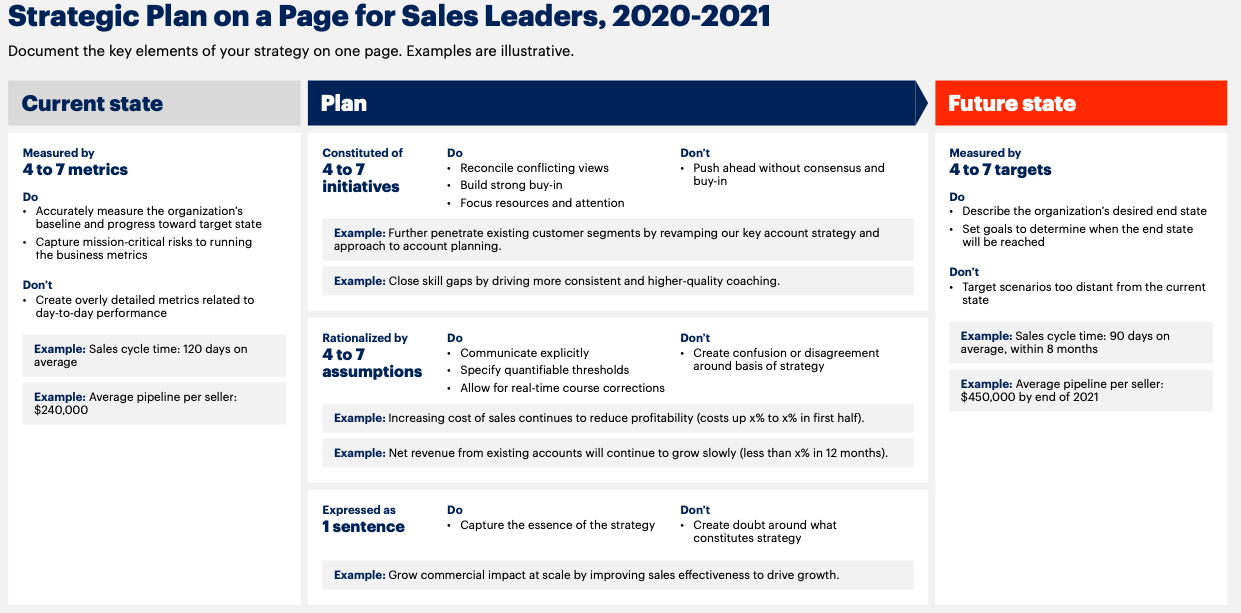How to adapt your sales strategy in a rapidly changing environment
We are once again at a stage, where we analyze the year gone-by and reset our strategies for the coming year. Strategically Planning and streaming “Why & How” of our sales plan to adapt in a rapidly changing environment.
The fact that business context is changing too fast and too radically, it cannot be the type that lasts for months or is fixed until the next annual review. Business scenario plans, strategies and strategic planning needs to be streamlined and reworked according to fast evolving environment. In this new environment, growth is a tough topic, however, every era of change offers an opportunity to find a growth advantage. It’s time to reevaluate our approach to selling.
At a functional level, strategic planning defines the roadmap for executing the choices and actions required to meet strategic goals — which reflect the function’s contribution to the enterprise business model and goals.
A waste-free planning approach works from the beginning to quickly produce a clear, effective, measurable, communicable plan by focusing exclusively on the following key components:
1. A few metrics that define the function’s current and target end state
2. The most critical assumptions underpinning the plan
3. The key initiatives required to achieve the end state
4. A concise statement that distills and communicates the strategy
Identify a shortlist of metrics to describe the function’s target state
To brainstorm appropriate metrics to measure your function’s target state, first confer with business leaders and other stakeholders to make sure you’re clear on the overarching business strategy and goals. Then identify metrics that relate directly to your stated outcomes.
You’ll need to estimate the metrics’ value on Day 1 to track your progress. The period to achieve those targets may be as short as a quarter or as long as five years — depending in part on the volatility of the current environment and the need to give a strategy a chance to work. Longer-term goals should still be tracked at least quarterly.
Document and monitor key assumptions
The assumptions that underpin your strategy are essential tools for communication because they reflect why the target end state and required initiatives are better than alternatives and they form the cognitive foundation of the selected strategy.
In articulating the central drivers of value for your function, include explicit cause- and-effect relationships and interdependencies where they exist among, e.g., the business ecosystem (initial and target), key initiatives and external driving forces.
Incorporate assumptions developed during scenario planning to better understand which of these relationships are highly reliable “truths” while others represent highly uncertain dynamics difficult to control or predict.
Make sure the assumptions are concrete, with quantifiable thresholds for monitoring, and frequently monitor the assumption thresholds to watch for advanced warning of an imminent breach. The breach of one of these assumptions would trigger an urgent course correction.
Identify key initiatives and milestones required to move to the end state
To identify the select key initiatives that drive waste-free planning, include initiatives that:
- Represent the “change the business agenda”
- Seek to create value beyond the inertial trajectory
- Demonstrate real action by grouping smaller projects under the initiative as necessary
The plan doesn’t need to include initiatives intended to run the business, such as “keep serving our customers” or “maintain employee engagement.” These initiatives strive to perpetuate the current state or trajectory.
After specifying the initiatives, set criteria and dates for key milestones and completion.
Craft a concise statement that captures the essence of the strategy
In creating a statement to surmise the essence or core elements of a strategy, strive for a single, aspirational sentence — but be willing to sacrifice conciseness for clarity. The focus should be more on getting the essential elements right than on finding the perfect turns of phrase. Teams caught in endless debate over wordsmithing have likely gone too far.
Benefits of waste-free strategic planning
By boiling strategic planning down to only these necessary and sufficient parts, a waste-free planning approach enables:
- Faster, but more collaborative, strategy formulation
- Quicker and more effective communication to implementers (with less “lost in translation”)
- Earlier course correction
- More objective measurement and allocation of performance gaps between strategy formulation and execution
- The components of the strategic plan can be documented on a single page, making it easy to communicate (see image below).
Strategic Plan For Sales Leaders, 2020-2021
Document the key elements of your strategy on one page. Examples are illustrative.

Strategic Plan on a Page Template


